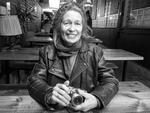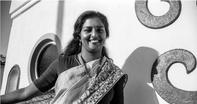
The Side by Side project arose from a concern I had to document women's involvement in the historic 1994 election and what it would mean to women. I invited Primrose Talakumeni and Mavis Mthandeki to join me and they became my apprentices. We received encouragement and contributions, equipment and a camera from Maggie Murray of Format, (the women's photography agency in London).
The Mayibuye Centre provided materials, a space to exhibit, and support throughout. We put this exhibition together in the hectic four months around the election period, photographing and interviewing women at all times of the day - while they were at work, their homes, and when they were between meetings. We all learned a great deal from these experiences and interactions.
It was a dynamic process, recording our history, through these women activists. The women represented in the exhibition are just a few of the many remarkable people who have sacrificed so much in the struggle for peace and democracy in South Africa.
Women Are Marginalised
It is only over the last three or four decades that women's role in the history of South Africa has belatedly, been given some recognition. Previously the history of women's political organization, their struggle for freedom from oppression, for community rights and, importantly, for gender equality, was largely ignored in history texts.
I grew up with history books in school that leaned heavily towards white political development to the detriment of studies of the history and interaction of whites with other racial groups. More importantly, they also focused on the achievements of men, often on their military exploits or leadership ability, virtually leaving women out of South African history.
Black women were not accepted as members of the African National Congress (ANC) when it was formed in 1912. This acceptance only came in 1943. Black men realized the need to unite politically to form a common front against white oppression, but amazingly there was no place for their women in their plans to do so.
Similarly, white South African women were not permitted to play any part in political decision-making in a male-run Union government. It was only in 1930 that white women gained the vote. This law was only grudgingly passed, by an all-male, all-white parliament, after a concerted 20-year campaign by dedicated women.
Our society in varying degrees with all race groups is conventionally patriarchal. It was the men who had authority in society; women were seen as subordinate to men.
Women's role was primarily a domestic one; it included child rearing and seeing to the well-being, feeding and care of the family. They were not expected to concern themselves with matters outside the home.

Growth for Women
However, with the rise of the industrial economy, the growth of towns and the development of the migrant labour system, these prescriptions on the role of women came to be overthrown. A huge event which contributed to the change in the role of women was the Women’s March to the Union Buildings in Pretoria August 9th in 1956.
Over 20 000 women protested the introduction of the Apartheid pass laws for black women and the presentation of a petition to the then Prime Minister J.G. Strijdom. This historic march will forever remain etched in the history of our country as a major demonstration by women of their determination to crush apartheid and colonialism.
The organisation behind the march was the Federation of South African Women, an anti-apartheid organisation for women of various groups including the ANC Women's League and they represented each race group in South Africa.
They had a document called What Women Demand which addressed needs such as child care provisions, housing, education, equal pay, and equal rights with men in regard to property, marriage, and guardianship of children.